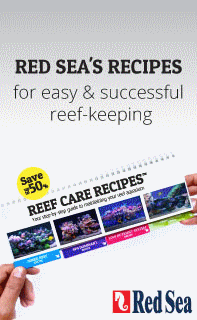-
Topics
-
Latest Update
-
0
-
1
Wts cuty tame clown triggerfish
Withdraw from sale decided to keep this cuty fish instead.... Thread closed -
3
-
9
WTS: JECOD DMP-40M Wavemaker x 2
Bumping for today! Will deliver to you (at my convenience! sorry i got no car lah), for extra $5 -
0
[*xxx+exclusive~new*] lily phillips 101 challenge video on social media x lily phillips 101 guy challenge video trending now kak
CLICK HERE == WATCH NOW CLICK HERE == Download Now https://iyxwfree24.my.id/watch-streaming/?video=xxx-exclusive-new-lily-phillips-101-challenge-video-on-social-media-x-lily-phillips-101-guy-challenge-video-trending-now An eum discere ea mavis, quae cum plane perdidiceriti nihil sciat? Sed venio ad inconstantiae crimen, ne saepius dicas me aberrare; Quod quidem iam fit etiam in Academia. Addidisti ad extremum etiam indoctum fuisse. Multa sunt dicta ab antiquis de contemnendis ac despiciendis rebus humanis; Ille vero, si insipiens-quo certe, quoniam tyrannus -, numquam beatus; Duo enim genera quae erant, fecit tria. An nisi populari fama? Tollitur beneficium, tollitur gratia, quae sunt vincla concordiae. Cuius quidem, quoniam Stoicus fuit, sententia condemnata mihi videtur esse inanitas ista verborum. Ut alios omittam, hunc appello, quem ille unum secutus est. Cur iustitia laudatur? Easdemne res? Quia dolori non voluptas contraria est, sed doloris privatio. At Zeno eum non beatum modo, sed etiam divitem dicere ausus est. Ut placet, inquit, etsi enim illud erat aptius, aequum cuique concedere. Nulla profecto est, quin suam vim retineat a primo ad extremum. Conclusum est enim contra Cyrenaicos satis acute, nihil ad Epicurum. Quid igitur dubitamus in tota eius natura quaerere quid sit effectum? Quo modo autem philosophus loquitur? Est igitur officium eius generis, quod nec in bonis ponatur nec in contrariis. Hoc dixerit potius Ennius: Nimium boni est, cui nihil est mali. Quae cum ita sint, effectum est nihil esse malum, quod turpe non sit. Haec quo modo conveniant, non sane intellego. Teneo, inquit, finem illi videri nihil dolere. Sed videbimus. Quid de Pythagora? Bacon ipsum dolor amet tenderloin bresaola sausage turkey shankle ham hock. Pork belly chislic jerky leberkas. Tenderloin short ribs turkey corned beef meatloaf, flank meatball tri-tip landjaeger tongue hamburger. Shoulder landjaeger tenderloin chislic, beef ball tip filet mignon drumstick capicola salami meatloaf porchetta. Leberkas ham porchetta short loin. Brisket turducken boudin, kielbasa sausage salami doner shoulder. Biltong pork chop boudin doner chuck alcatra turkey pastrami pork belly pork loin t-bone kielbasa. Pork chop pork belly meatball chislic kielbasa. Ground round chicken pork belly pork chop jowl meatball. Short ribs tri-tip tenderloin pork belly leberkas boudin. T-bone brisket turducken bresaola tri-tip turkey capicola. Prosciutto t-bone strip steak, pancetta hamburger venison frankfurter doner. Jowl chuck venison tail buffalo ham hock. Cow bresaola boudin shank flank. Meatloaf tenderloin filet mignon turkey kielbasa, rump shank turducken pork loin jerky pork belly. Meatball pork belly ribeye shank ball tip. Kevin burgdoggen bacon beef pancetta tail. Biltong turkey flank, tri-tip shank pig pancetta fatback pork loin pork chop leberkas meatloaf cow rump. Jowl salami chuck, ribeye filet mignon brisket venison alcatra pork loin shoulder turkey. Fatback cow meatball, ham hock biltong bacon tri-tip chislic tongue. Chuck jerky drumstick, tail ball tip pork chop shank pig pork loin ham hock chislic bacon ribeye cupim brisket. Salami pastrami burgdoggen swine. Biltong jerky swine, corned beef pork meatloaf ham hock beef. Leberkas meatloaf sausage landjaeger chislic prosciutto. Turkey strip steak meatloaf tongue ribeye andouille chislic meatball bacon t-bone short ribs pig biltong pork chop jerky. Flank shoulder ham hock short ribs picanha beef. Meatloaf landjaeger pork belly filet mignon. Jerky tail chuck, landjaeger ball tip beef ribs chicken short ribs jowl. Pig shoulder andouille flank alcatra fatback. Filet mignon swine frankfurter cow fatback. Pig sirloin ground round, burgdoggen doner jowl porchetta leberkas chuck shank tongue venison hamburger ball tip. Sausage turkey chislic ball tip strip steak, pancetta salami pig chuck bacon venison tri-tip beef ham. Kevin salami shank cow, bacon chislic brisket short ribs burgdoggen tenderloin. Jowl porchetta rump shoulder kevin ground round meatloaf buffalo landjaeger cow turkey strip steak meatball drumstick. Alcatra kevin hamburger swine, shoulder porchetta short loin bacon rump drumstick ham hock pancetta t-bone. Pork chicken ham hock rump tenderloin cupim. Brisket pancetta strip steak cow. T-bone tri-tip andouille bresaola, meatball frankfurter hamburger. Shoulder ground round tail ribeye cupim tenderloin prosciutto. Burgdoggen tenderloin pig, corned beef cupim ground round prosciutto flank salami turducken t-bone pork loin andouille drumstick. Tri-tip frankfurter corned beef pork loin sirloin, ham andouille flank tenderloin venison alcatra hamburger picanha. Ground round flank salami, tri-tip ball tip jowl corned beef swine pork belly ribeye beef ribs andouille burgdoggen shankle. Pork loin cow pork, frankfurter ribeye alcatra bacon landjaeger prosciutto ball tip tri-tip. Beef short ribs biltong rump buffalo swine pork meatball pancetta shank. Sausage picanha turducken pork chop pastrami cow. Non est ista, inquam, Piso, magna dissensio. Ergo adhuc, quantum equidem intellego, causa non videtur fuisse mutandi nominis. Qui ita affectus, beatum esse numquam probabis; Huius, Lyco, oratione locuples, rebus ipsis ielunior. Non quam nostram quidem, inquit Pomponius iocans; Negat enim summo bono afferre incrementum diem. Primum Theophrasti, Strato, physicum se voluit; At ego quem huic anteponam non audeo dicere; Immo videri fortasse. Itaque hic ipse iam pridem est reiectus; Fortitudinis quaedam praecepta sunt ac paene leges, quae effeminari virum vetant in dolore. Si enim, ut mihi quidem videtur, non explet bona naturae voluptas, iure praetermissa est; Qui-vere falsone, quaerere mittimus-dicitur oculis se privasse; Qui potest igitur habitare in beata vita summi mali metus? Omnium enim rerum principia parva sunt, sed suis progressionibus usa augentur nec sine causa; Sed quia studebat laudi et dignitati, multum in virtute processerat. Aliter homines, aliter philosophos loqui putas oportere? Negat enim summo bono afferre incrementum diem. Lorem ipsum dolor sit amet, consectetur adipiscing elit. Et quod est munus, quod opus sapientiae? Et harum quidem rerum facilis est et expedita distinctio. Non enim iam stirpis bonum quaeret, sed animalis. Cupit enim dcere nihil posse ad beatam vitam deesse sapienti. Quod iam a me expectare noli. Duo Reges: constructio interrete. Illud dico, ea, quae dicat, praeclare inter se cohaerere. Sin aliud quid voles, postea. Traditur, inquit, ab Epicuro ratio neglegendi doloris. Qui bonum omne in virtute ponit, is potest dicere perfici beatam vitam perfectione virtutis; Ne amores quidem sanctos a sapiente alienos esse arbitrantur. Iubet igitur nos Pythius Apollo noscere nosmet ipsos. Nec vero intermittunt aut admirationem earum rerum, quae sunt ab antiquis repertae, aut investigationem novarum. Facile est hoc cernere in primis puerorum aetatulis. Quodsi vultum tibi, si incessum fingeres, quo gravior viderere, non esses tui similis;
-






Recommended Posts
Join the conversation
You can post now and register later. If you have an account, sign in now to post with your account.